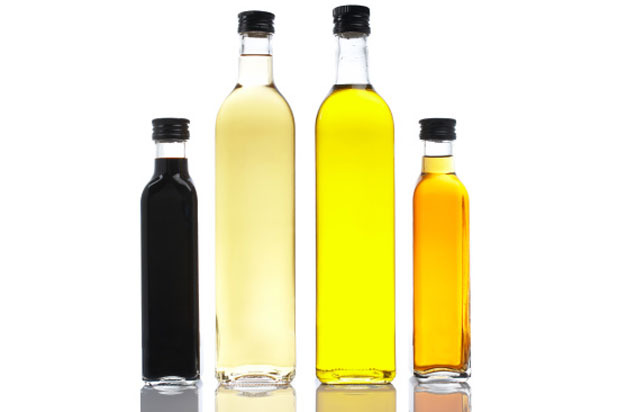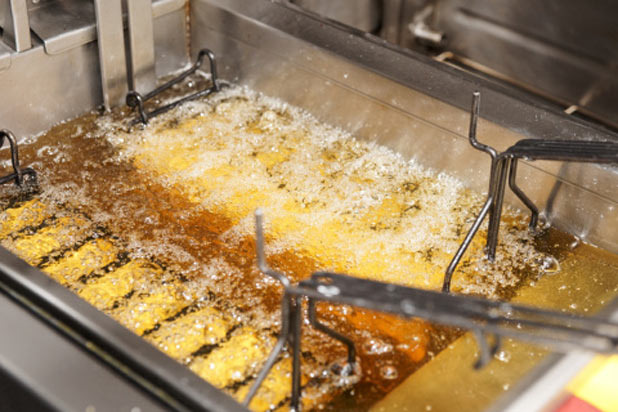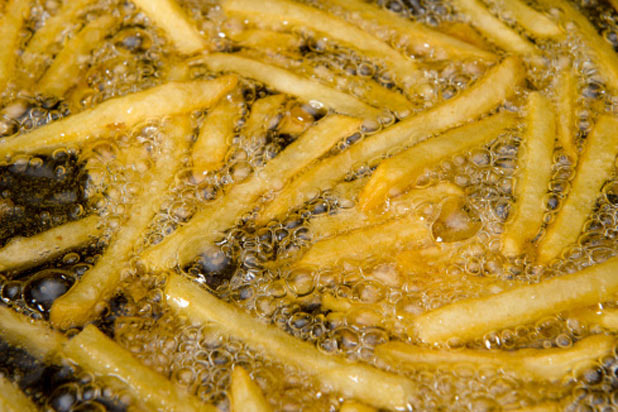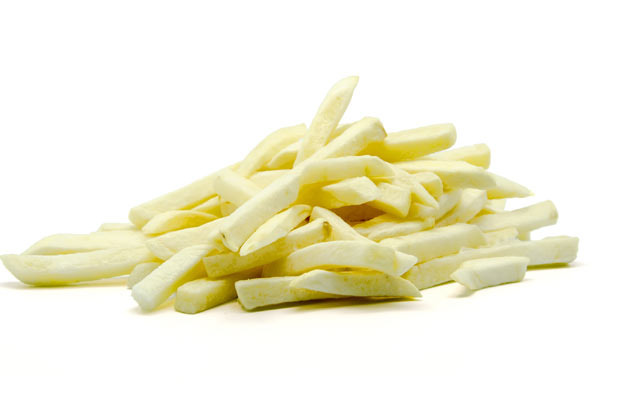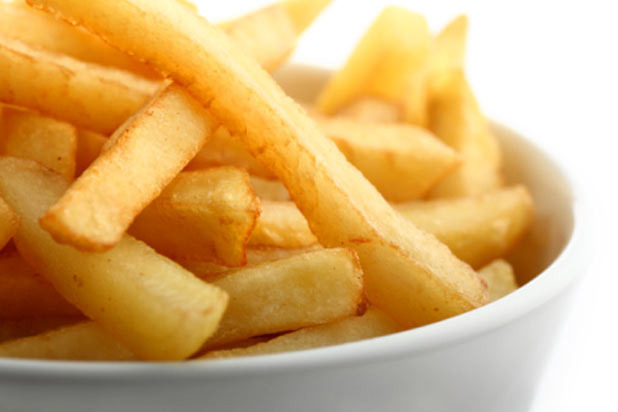How To Make Fries That Taste Like McDonald's' (Slideshow)
We're starting at the very beginning of this story, because how the potato became a fry is an important part of why McDonald's fries taste the way they do. If you want to start with a frozen bag of fries, skip ahead a few slides, but if you're doing it from scratch start to finish, start reading here. And here would be with fresh Idaho potatoes, washed and peeled.
Really, Really Good Knife Skills
One of the first things you'll need once you've washed and peeled your Idaho potatoes are some "dope a$$ knife skills," as Talde puts it. This is so that you can cut the fries into a consistent and uniform diameter, which is one of Talde's favorite things about the fry. While he admits that they may vary in length, the diameter will always be ¼ -inch thick, and this is one of the things that lends to a perfectly crisp and golden brown fry. While you're cutting your fries, Talde instructs to place the cut ones in a cold water bath mixed with vinegar. When you're done prepping all of the fries, drain and rinse the cut fries with cold water, and put them in another water-vinegar bath to sit overnight. Talde tells us that this allows them to leech out some of that extra starch, so that they have a better chance of crisping up.
The Mystery Ingredients
We're not going to try to define every single ingredient found in McDonald's fries in order to replicate them at home, but instead we paid attention to a few simple cues given to us by McCain's product manager, Mario Dupuis. As he says in the video, the fries are first blanched to remove excess sugars and to stop enzyme activity, and then tossed in a dextrose solution and another "ingredient," which prevents them from turning gray. After reading McCain's website, we were able to determine that they blanch the fries at around 180 degrees for several minutes, and that afterward they're dried before being tossed in the solutions. For a faster drying process, we dried our fries in the oven at 125 degrees for five minutes, and then tossed them in a sugar and water solution to replicate the dextrose solution, and then tossed them in a water, vinegar, and lemon juice bath, which we peg as the "ingredient" that prevents them from going gray.
Make Fries, Not Baked Potatoes
Now that the fries are prepped and ready to go, it's time to discuss the method with which you'll make them. Some people think that they can cut corners and the mess by using an oven, but Talde says it best when he told us, "If you don't have a fryer, make mashed potatoes [instead]." Fries are called fries for a reason, so it's time to invest in a deep-fryer, or break out a large skillet durable enough for frying (like a Dutch oven or cast-iron skillet). The oil that's used is also important with this step. Many people extrapolate that the fries are so delicious and rich because they're fried in some exotic ingredients, like beef tallow, but Talde ensures us that this step can be skipped. Because beef tallow is so hard to find, he likes using peanut oil to make his fries, because it has a great flavor and a high burning point.
Blanching
The blanching method for McDonald's is used by everyone across the board, including the McCain suppliers and Talde. Talde explains that the blanching method is necessary "because if you cooked them raw, they'd never really get that crispy." We decided to go with McCain's method, which is frying them for 45 to 60 seconds at 390 degrees. Once pre-fried, place the fries on a wire rack or colander and shake them vigorously so that all of the excess oil is removed.
Freezing?
McDonald's fries start frozen, and this is mostly because it's the safest way to transport them from suppliers to McDonald's' locations, but cooling the fries down after pre-frying them is an important step in the process, too. To cool our fries, we laid them out on baking sheets so that they were in a single layer and placed them in the freezer for at least four hours.
Finishing the Fries
As you can see by now, most of the important steps of making McDonald's fries come from the prep. Once they're cooled, they're ready for the actually frying, which is a simple process that starts at 275 degrees for a pre-fry, and then at 375 degrees for about five minutes, or until crisp and golden brown. And while you may think the fries are heavily salted (even Talde does), we chose to believe McDonald's when they say they don't use that much salt, and we salted every 2 cups of ours with 1 tablespoon of fine sea salt, to replicate that "heavily salted" taste and appearance. Exact McDonald's fries may not be possible at home, but this version gets you close enough.
Click here to see the Fries That Taste Like McDonald's' Recipe


